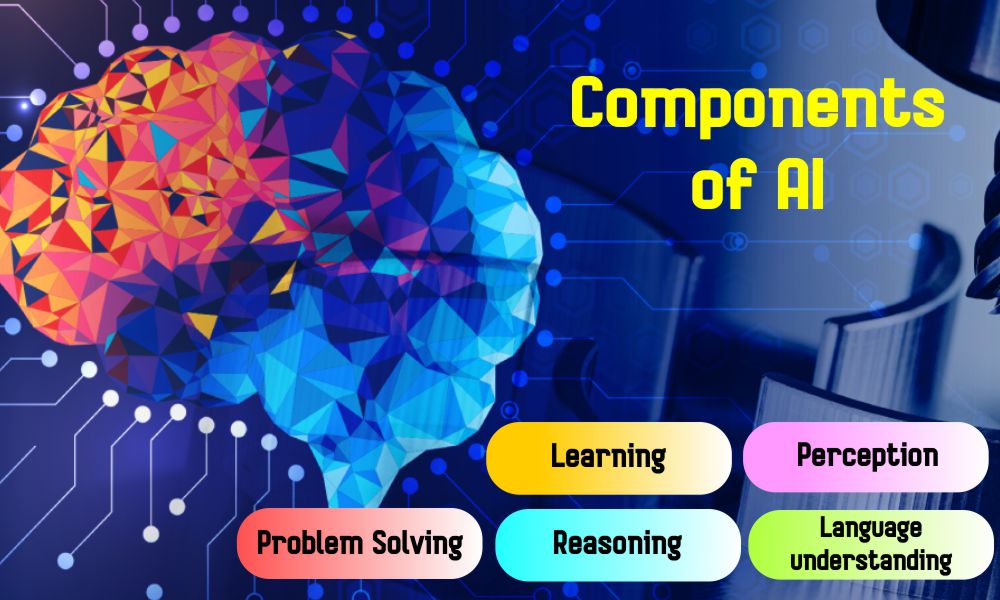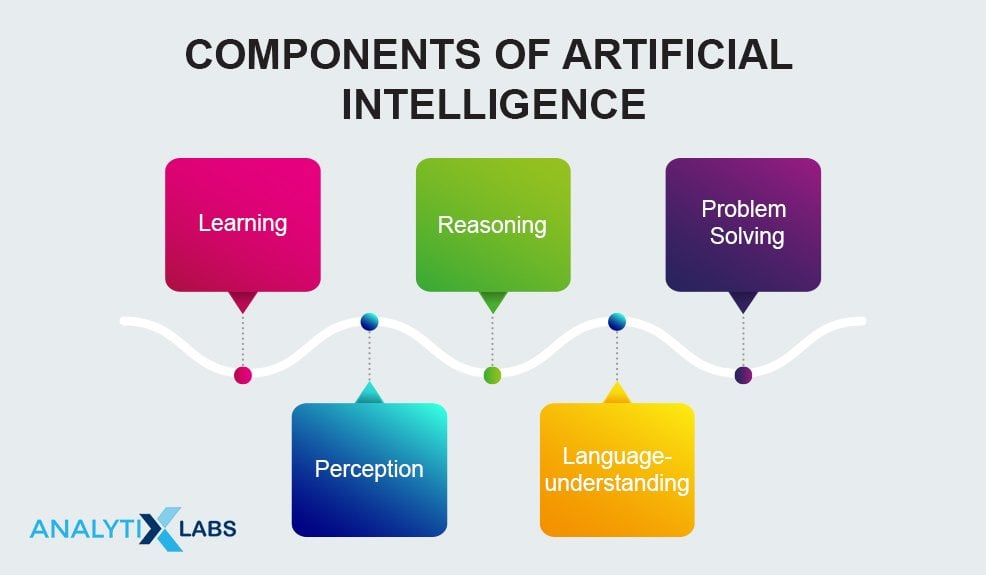Components of AI– Three major techniques by artificial intelligence. Data-driven, future development, and symbolic AI are what they are. Expert systems, fuzzy logic, and the Early AI principle are all included in symbolic artificial intelligence. When a computer is as an expert system, it is given a problem to solve and is put through a series of exercises to test its ability to think logically. In a confine setting, they have been assign a set of rules and will faithfully abide by them. It is a primarily true-or-false approach in fuzzy logic and is in control systems. In data-driven machine learning, neural networks and deep learning algorithms are used to process the data pool create by data mining and big data, which is then applies to NLP. Components of AI Different techniques differentiate and use in different situations the right one to their level of maturity. In this topic, we are going to learn about How Artificial Intelligence Works.
components of AI
- Over the next ten years, applications of artificial intelligence are anticipate to have a significant impact on our society and economy.
- We are in the initial stages of the most promising period for technological innovation and value creation in the foreseeable future, according to many reliable experts.
- Many individuals might be curious about the many elements that enable AI to function in the first place despite the large number of goods and services that use AI in their distinct roles.
- In spite of the fact that creating artificial intelligence is a subtle and sophisticated process.
- It’s similar to creating other machines or systems in that it operates according to a set of fundamental principles.
- Consequently, the five fundamental elements of artificial intelligence are as follows:
Learning
The learning stage is the first stage in the growth process of artificial intelligence, just like it is for humans. For instance, when training a youngster to ride a bike for the first time, there will be a trial-and-error process during which the child will make mistakes and fall off their bike while progressively learning the guidelines and methods required
to perform the task at hand. The process of learning in the setting of the creation of artificial intelligence comprises the memorization of specific information, such as various approaches to problems, vocabulary, and foreign languages, among others. Artificial intelligence-based software applications can record all activities or movements that resulted in a certain outcome by way of this learning process.
Reasoning
Reasoning is a key component of artificial intelligence. While the concept of mental reasoning has largely restrict to the human mind for much of record history, software programmes that are able to draw conclusions and inferences from a situation without the need for human interference have become crucial to the development of artificial intelligence. Deductive and inductive reasoning are the two categories into which these inferences fall. Until now, inductive reasoning has enable computer programmers and software developers to produce goods and systems that deliver consistent outcomes when confronted with a specific issue or problem, whether this is in terms of a broad topic like automatic transcription and translation or a more specialise application like the development of artificial intelligence.
Problem solving
Problem-solving is the third key element in the creation of artificial intelligence systems and programmes. Problem-solving is maybe the most important aspect in terms of the development of artificial intelligence because the fundamental premise. AI is the development of computer programmes and systems that handle issues in a way that is comparable to that of humans. In the simplest terms, an AI’s capacity for problem-solving is dependent on the use and manipulation of data. Where the answer must be x. Alternative problem-solving methods in the context of AI include the creation of effective algorithms, doing root cause analysis with the aim of identifying a suitable solution, and heuristics in more complex applications.
Perception

Perception is the fourth important factor in the creation of artificial intelligence software and systems. According to analogies with how the human mind works, How people see the environment around them a significant impact on how they approach solving difficulties in their individual lives. In terms of artificial intelligence, perception is accomplish by utilising a variety of sense-organs, both actual and made-up. The complexity of human vision makes it incredibly difficult for artificial intelligence algorithms to understand certain inputs and information. Many self-driving cars function by sensing various physical things in an environment. Such as traffic lights, to provide a practical application of perception in artificial intelligence.
Language Understanding
Language comprehension is the last aspect of the evolution of artificial intelligence. In its most basic form, language comprehension in the context of the creation of artificial intelligence. Describe as a collection of distinct systems indications that use .Convention to justify their varies ways or procedures.
Since the vast majority of artificial intelligence systems and programmes are currently being develop in the English-speaking world. Understanding the English language is a crucial part of the development of many of these systems and programmes. Software engineers able to make sure that computer programmes can effectively carry out their various roles and activities by using language knowledge.
Conclusion:
Computer science, biology, psychology, linguistics, mathematics, and engineering all have foundations in the science and technology of artificial intelligence. Components of AI places a lot of emphasis on creating computer algorithms for skills like thinking, learning, and problem-solving that are similar to those of human intelligence.
Also read: What is the future of AI? for the beginners









GIPHY App Key not set. Please check settings